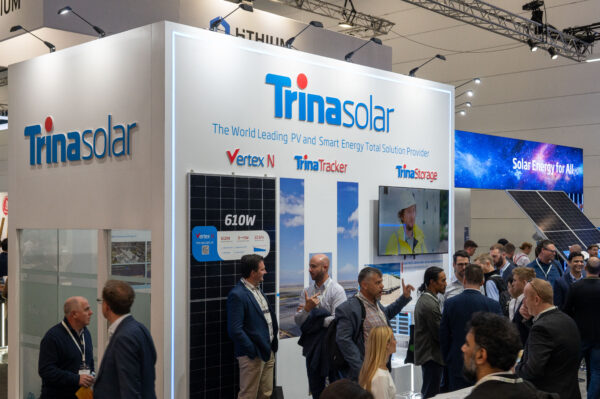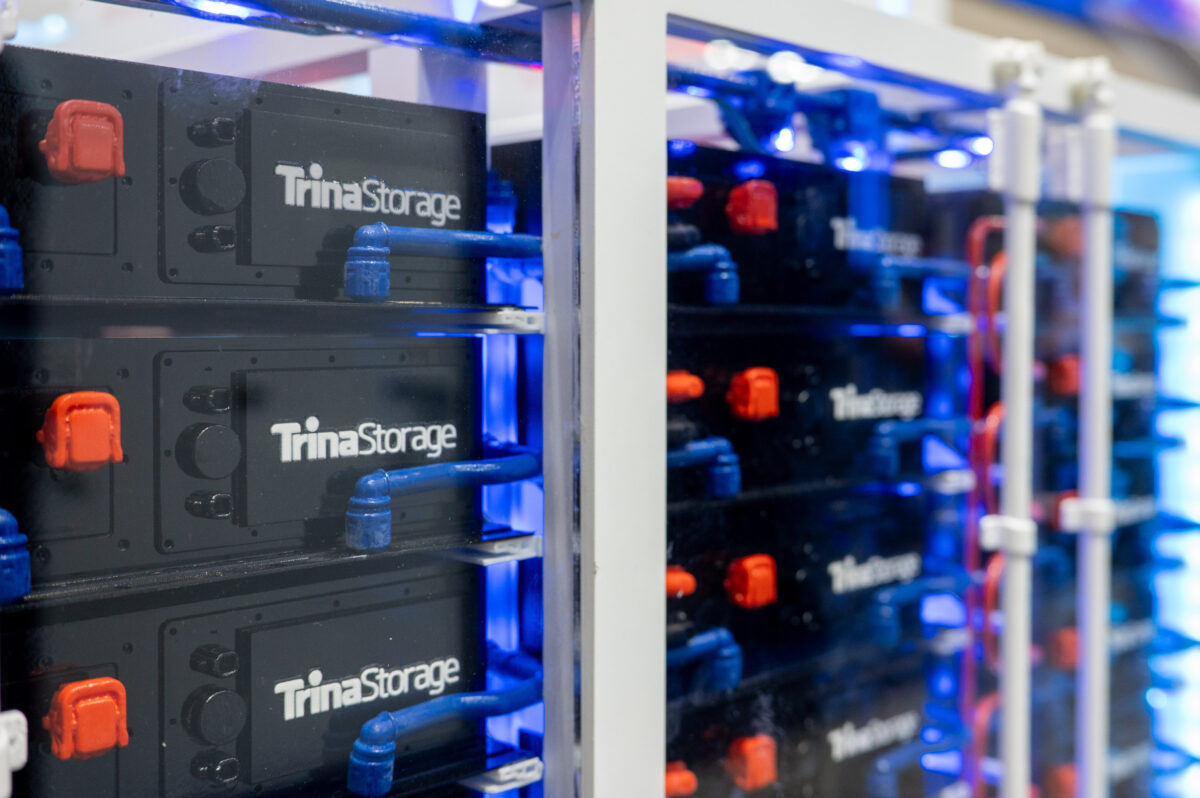Trina Storage, the battery-focused arm of the Chinese solar giant Trina, has unveiled its Elementa 2 utility-scale battery system, featuring cells manufactured by Trina itself in a fully vertically-integrated play.
The lithium iron phosphate, or LFP, battery comes in 2 MW / 4 MWh units which fit into a 20 foot shipping container. Like most utility-scale batteries, the units can be added in parallel to increase project capacity.

The Elementa 2 launched in China on October 24, and was unveiled at All-Energy just a few days later. Australia is expected to be the second market after China to receive the battery, with the company aiming for it to become commercially available in Q2, 2024.
The Elementa 2 is the second generation version of the Elementa battery the company launched in 2022. The new generation almost doubles the storage capacity of the previous model, which stored 2.2 MWh. The increased density comes from the fact the first generation Elementa battery used third party cells, whereas the second generation uses Trina’s own cells.
Trina has opted for full vertical integration on its storage products in order to control its production costs as well as ensure it can deliver orders on schedule. This includes in house research and development, cabinet design and component manufacturing, Trina officials told pv magazine Australia.
Trina Storage began in 2015, but the company’s cell manufacturing line only became operational in 2021. It has two bases in China, and is aiming for 12 GWh of cell production capacity by the end of 2023, and 25 GWh by 2025. While the company will supply cells for its own product ranges as the priority, it may also sell its battery cells into the broader market depending on surplus levels.
To support the uptake of its new battery storage product, Trina is offering design engineering services to help integrate its Elementa 2 line into planned projects.
The company is understood to be in discussions around deploying the technology in Australian projects, though no formal announcements have been made to date.
This content is protected by copyright and may not be reused. If you want to cooperate with us and would like to reuse some of our content, please contact: editors@pv-magazine.com.









2 comments
By submitting this form you agree to pv magazine using your data for the purposes of publishing your comment.
Your personal data will only be disclosed or otherwise transmitted to third parties for the purposes of spam filtering or if this is necessary for technical maintenance of the website. Any other transfer to third parties will not take place unless this is justified on the basis of applicable data protection regulations or if pv magazine is legally obliged to do so.
You may revoke this consent at any time with effect for the future, in which case your personal data will be deleted immediately. Otherwise, your data will be deleted if pv magazine has processed your request or the purpose of data storage is fulfilled.
Further information on data privacy can be found in our Data Protection Policy.